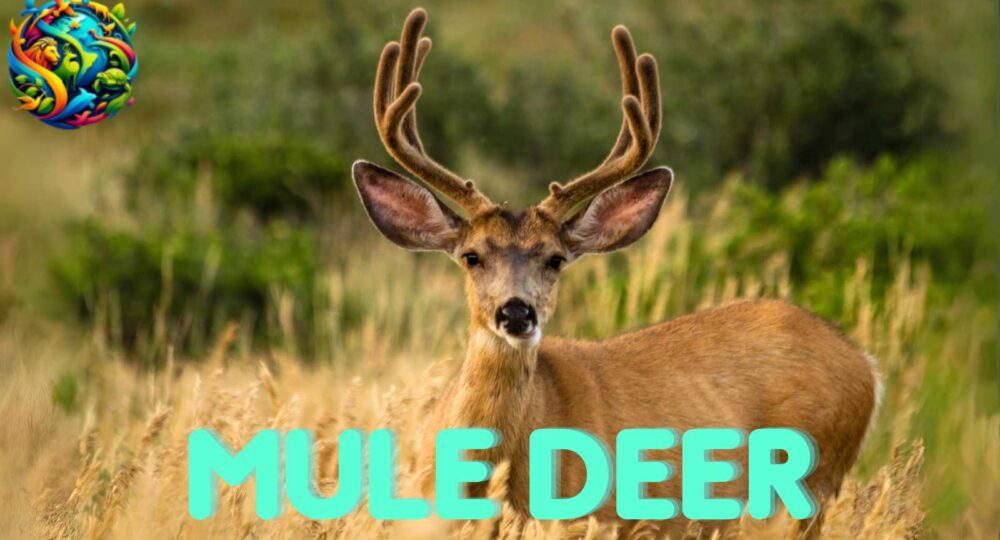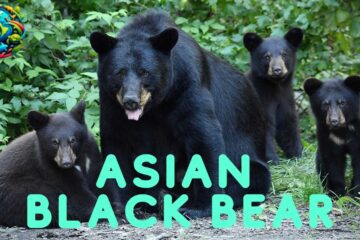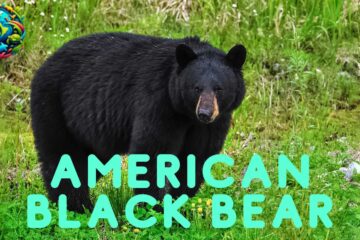
Mule Deer: Icons of the Western Wilds
Mule Deer: Icons of the Western Wilds
Introduction
The mule deer, with its large ears and distinctive black-tipped tail, is an iconic species of the western United States. Known for their adaptability and striking appearance, these animals inhabit a variety of ecosystems, from dense forests to arid deserts. Revered for their beauty and resilience, mule deer play a crucial role in their ecosystems and are a favorite among wildlife enthusiasts and hunters alike. This article explores the fascinating world of mule deer, covering their habitats, physical characteristics, behaviors, and much more.
Amazing Facts
Mule deer possess numerous intriguing attributes:
- Large Ears: Their large, mule-like ears are a defining characteristic, providing them with excellent hearing.
- Antler Growth: Bucks (males) grow bifurcated antlers, which split into two branches. These antlers are shed and regrown annually.
- Adaptability: They thrive in diverse habitats, from the dense forests of the Pacific Northwest to the deserts of the Southwest.
- Migration: In some regions, mule deer undertake seasonal migrations, moving to higher elevations in the summer and lower elevations in the winter.
- Communication: These animals use a range of vocalizations, body language, and scent markings to communicate.
Habitat and Food
These adaptable creatures thrive in various environments, reflecting their versatility and resilience.
Habitat:
- Found across western North America, including the United States, Canada, and Mexico.
- They inhabit diverse environments, such as forests, grasslands, shrublands, and deserts.
- These animals prefer areas with abundant vegetation and access to water, often found near streams, rivers, and lakes.
Food:
- Herbivorous, with a diet consisting of leaves, twigs, grasses, and forbs.
- During the spring and summer, they feed on a variety of herbaceous plants, while in the fall and winter, they browse on shrubs and woody vegetation.
- These deer play a crucial role in their ecosystems by aiding in seed dispersal and maintaining plant diversity.
Appearance
Mule deer are known for their distinctive and striking appearance. Key characteristics include:
- Size: Adults stand about 3 to 3.5 feet (0.9 to 1.1 meters) tall at the shoulder and weigh between 100 to 300 pounds (45 to 136 kg).
- Color: Their coat varies seasonally, from reddish-brown in the summer to grayish-brown in the winter. They have a distinctive black-tipped tail.
- Antlers: Bucks grow large, bifurcated antlers that can span up to 3 feet (0.9 meters) wide. These antlers are used for defense and display during the rut.
- Build: They have slender, agile bodies with long legs, adapted for running and jumping.
- Ears: Their large, mule-like ears provide them with excellent hearing and help them detect predators.
Types/Subspecies of Mule Deer
There are several subspecies of mule deer, each with unique traits and adaptations to their specific environments:
- Rocky Mountain Mule Deer (Odocoileus hemionus hemionus): Found in the Rocky Mountains and surrounding areas, known for its large size and impressive antlers.
- California Mule Deer (Odocoileus hemionus californicus): Inhabits coastal and inland regions of California, characterized by its adaptability to various habitats.
- Desert Mule Deer (Odocoileus hemionus eremicus): Found in the arid deserts of the southwestern United States and northern Mexico, known for its smaller size and lighter coat.
- Black-Tailed Deer (Odocoileus hemionus columbianus): Native to the Pacific Northwest, recognized by its black tail and preference for forested habitats.
Predators and Threats
Despite their agility and adaptability, mule deer face various natural and human-induced threats that impact their survival.
Natural Predators:
- Cougars: Cougars are one of the primary predators, using stealth and power to take down these animals.
- Wolves: Packs of wolves also pose a significant threat, particularly in areas where they have been reintroduced.
- Bears: Both black and grizzly bears may prey on them, especially during the calving season.
- Coyotes: Coyotes often target fawns and occasionally adults, especially in regions where larger predators are absent.
Threats:
- Habitat Loss: Urban development, agriculture, and deforestation reduce available habitats.
- Human-Wildlife Conflict: They often come into conflict with humans when they raid crops or are involved in vehicle collisions.
- Hunting: While regulated hunting helps manage populations, overhunting and poaching can threaten specific populations.
- Disease: Diseases such as chronic wasting disease (CWD) can significantly impact populations.
- Climate Change: Alterations in weather patterns and habitat conditions due to climate change can impact food availability and migration patterns.
Mating
These animals exhibit unique and complex mating behaviors, essential for the continuation of their species.
- Breeding Season: The rut typically occurs in the fall, from October to December.
- Courtship Displays: Bucks engage in courtship behaviors such as vocalizations, antler displays, and physical sparring to attract does (females).
- Territoriality: During the rut, bucks become highly territorial and will fight rivals to maintain dominance and access to does.
- Gestation and Birth: After a gestation period of about 200 days, does give birth to one or two fawns, usually in late spring or early summer. Fawns are hidden in dense vegetation for protection and are weaned by the fall.
How They Communicate
Mule deer use various methods to communicate with each other, particularly during mating and social interactions.
Vocalizations:
- Grunts and Barks: Used to communicate alarm, establish dominance, and maintain contact within groups.
- Bleats: Fawns emit high-pitched bleats to communicate with their mothers.
Body Language:
- Posturing: Bucks use body postures, such as raised hackles, tail positioning, and ear movements, to convey aggression, submission, or readiness to mate.
- Antler Displays: Bucks use antler displays and sparring to establish dominance and attract mates.
Chemical Signals:
- Scent Marking: They use scent glands located on their legs, forehead, and hooves to mark territory and signal reproductive status.
Religious and Cultural Significance
Mule deer hold significant symbolic and cultural importance in various societies:
Indigenous Cultures:
- Spiritual Symbol: Many Native American tribes view these animals as symbols of grace, strength, and renewal, often featuring prominently in myths, legends, and ceremonies.
- Hunting Traditions: Indigenous peoples have traditionally hunted them for their meat, hides, and antlers, using sustainable practices that honor the animal’s spirit.
Modern Symbolism:
- Conservation Icon: They are often used in conservation campaigns to raise awareness about wildlife protection and the importance of preserving natural habitats.
- Popular Culture: These animals appear in various forms of media, from literature and art to movies and advertising, symbolizing the beauty and resilience of the western wilds.
Movies Featuring These Graceful Creatures
Mule deer have been featured in various films and documentaries, showcasing their behaviors and the challenges they face:
- “The Deer Hunter” (1978): A dramatic film that uses a deer hunting trip as a metaphor for the impacts of the Vietnam War on a group of friends.
- “Planet Earth II” (2016): The “Mountains” episode includes stunning footage of these animals in their natural habitat, showcasing their interactions with other wildlife.
- “The Life of Mammals” (2002): A BBC documentary series narrated by David Attenborough, featuring segments on these animals and their survival strategies.
Pronunciation in Different Languages
The term for these graceful creatures is pronounced differently across various languages, reflecting linguistic diversity:
- English: /mjuːl dɪr/
- Spanish: /ciervo mula/
- French: /cerf mulet/
- German: /Maultierhirsch/
- Italian: /cervo mulo/
- Mandarin Chinese: /骡鹿 (luólù)/
- Japanese: /ミュールジカ (myūru jika)/
- Russian: /муловый олень (mulovyy olen’)/
- Arabic: /غزال بغل (ghazal baghl)/
- Hindi: /खच्चर हिरण (khacchar hiran)/
FAQs
Q: What do mule deer eat? A: They are herbivores, with a diet that includes leaves, twigs, grasses, and forbs. They feed on a variety of herbaceous plants in the spring and summer and browse on shrubs and woody vegetation in the fall and winter.
Q: Where do they live? A: These animals inhabit diverse environments across western North America, including forests, grasslands, shrublands, and deserts. They prefer areas with abundant vegetation and access to water.
Q: How do mule deer communicate? A: They communicate through vocalizations such as grunts and barks, body language including posturing and antler displays, and chemical signals like scent marking.
Q: Are mule deer endangered? A: While many populations are stable, some face threats from habitat loss, human-wildlife conflict, hunting, and disease. Conservation efforts are essential to protect vulnerable populations.
Q: What is unique about their reproduction? A: Mule deer typically have a breeding season in the fall, with bucks engaging in courtship displays and territorial battles. After a gestation period of about 200 days, does give birth to one or two fawns, which are hidden in dense vegetation for protection.
The mule deer symbolizes the beauty and resilience of the western wilds, playing a vital role in its ecosystem and human culture. This exploration highlights their unique traits and behaviors, celebrating the complexity and charm of these remarkable animals.







